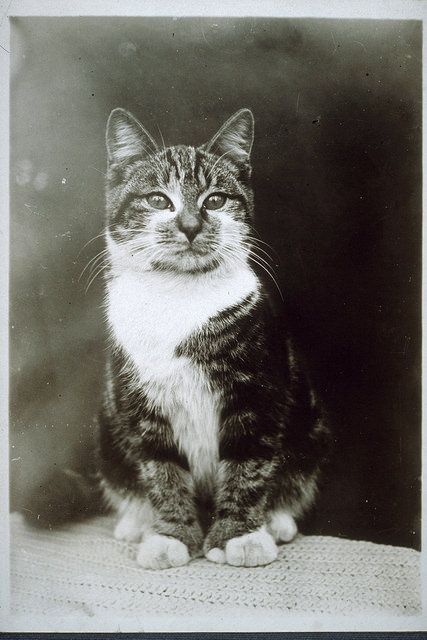
In Part I of this Old New York cat tale, we met Crazy Cat, a black and white cat that called Sheridan Square in Greenwich Village his home.
Crazy Cat did not belong to any one human in particular, but rather made the rounds from one tearoom to another, no doubt dining on a few morsels or taking a cat nap near a warm fire in every establishment that would welcome him.
During this time, a female photographer who had a small studio in an old converted horse stable at 6 1/2 Sheridan Square was also making the rounds with camera in hand. She captured the Bohemian lifestyle in her photographs, many of which featured women business owners and their cats.
Sometime around 1918, give or take a year, Jessie Tarbox Beals took a series of photos of Grace Godwin Sperry, the proprietor of a tearoom at 58 Washington Square South. As the photo below shows, Grace apparently had a black and white Tuxedo cat — maybe this cat was Crazy Cat, and maybe Grace Godwin’s Garret was one of his neighborhood haunts.
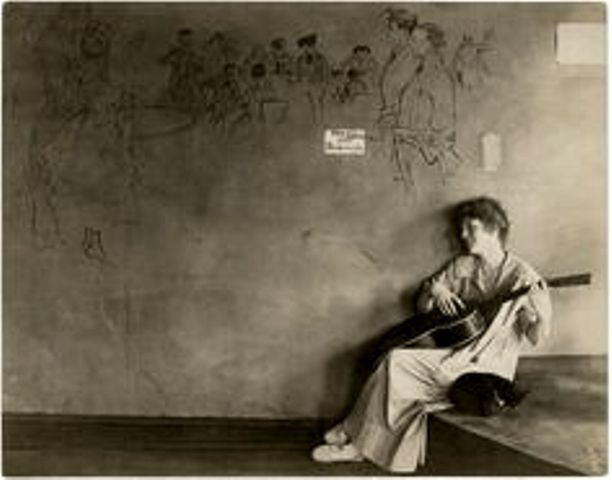
Grace Godwin’s Garret
Grace Godwin’s tearoom and the site it occupied on Washington Square South has an interesting history going back to the 17th century, when the land in this area was home to a number of freed African-born slaves who received Dutch land grants and established farms near the area of today’s Washington Square Park.
Under British rule, the land in this part of Greenwich Village was owned by Elbert Herring, who had a large farm just south of what was called Skinner Road (present-day Christopher Street). Following the Revolutionary War, around 1780 or so, the city purchased land from Herring for use as a potter’s field for poor and indigent people, mostly victims of yellow fever. A gallows for public executions was also erected on the site where Stanford White’s Washington Square Arch now stands.
In 1819, Daniel Megie (possibly McGee), the city’s gravedigger and hangman, purchased a small plot across from the potter’s field from John Ireland for $300. There, at the southeast corner of present-day Washington Square South and Thompson Street, he lived in a small circa 1800 frame house, where he also stored the tools of his trade. The address of the gravedigger’s house was reportedly #58 Washington Square South.
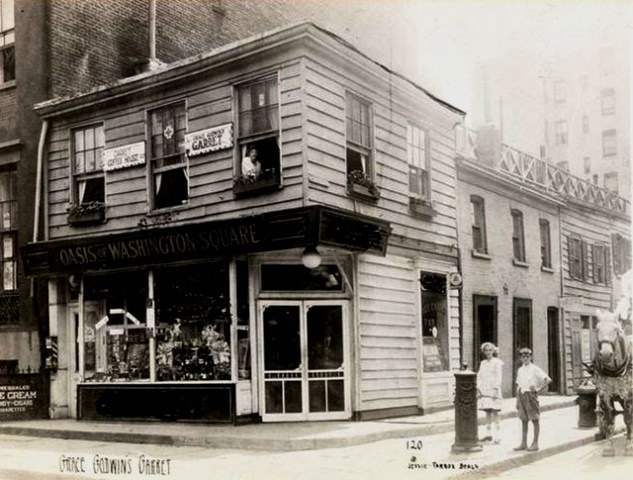
Daniel Megie lived at this address until 1821, when the city’s potter’s field was removed to the area of present-day Bryant Park. When he moved out that year, he sold the building to Joseph Dean. Over the next 60 years, the property was owned by Alfred S. Pell, Frederick E. Richard, Peter Gilsey, John De Ruyter, and Samuel McCreery (New York Times, March 2, 1913). At some point during the late 1880s, the home was occupied by New York Governor Lucius Robinson.
In the 1910s, #58 was home to a popular soda fountain, candy, and cigar shop on the ground floor and Guido Bruno’s Garret on the second floor, where local artists exhibited their work. (Bruno, who also published a small newspaper at this location, called the building “the most forlorn-looking two-story frame building that can be found in New York.”) The frame buildings were reportedly heavily damaged in a fire in 1916, in which Bruno lost many historical items of great value (including unpublished manuscripts by Bernard Shaw and Mark Twain).
The buildings were apparently salvaged following the fire in 1916. When Jessie Tarbox Beals took the photograph above around 1918, Grace Godwin had taken over the upstairs, where she served breakfast, afternoon tea, spaghetti dinners, and after-dinner coffee to mostly out-of-towners who spotted the garret from the Fifth Avenue bus terminus.
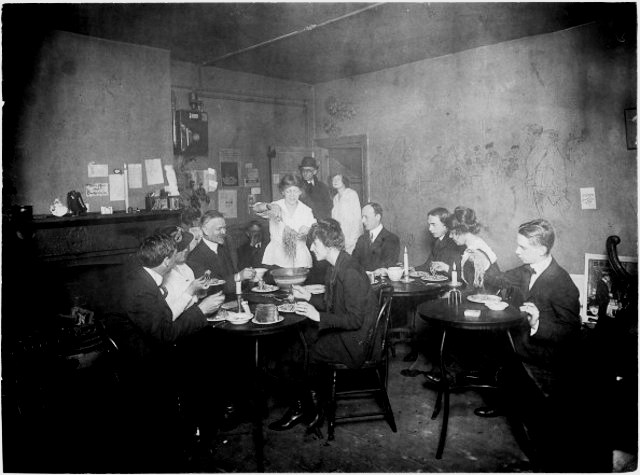
In August 1927, The New York Times reported that the old brick and timber buildings on the corner of Washington Square South and Thompson Street were set to be demolished and replaced by a 15-story apartment building. At this time, the property was owned by Dr. Joseph J. Lordi, and #58 was Romany Marie’s Tavern.
These plans apparently fell through, probably due to the proposed height and zoning regulations. A photo of the “Red Row” from 1945 shows a small empty lot with a bare tree where #58 once stood; #61, the “House of Genius,” is to the right of the four-story building:
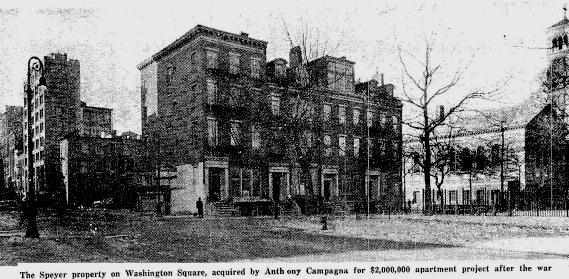
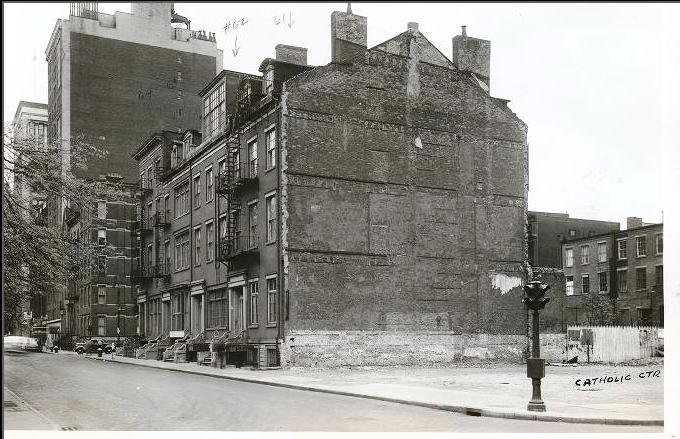
In the 1930s, banker James Speyer purchased the parcel along Washington Square South between Thompson Street, LaGuardia Place, and West 3rd Street.
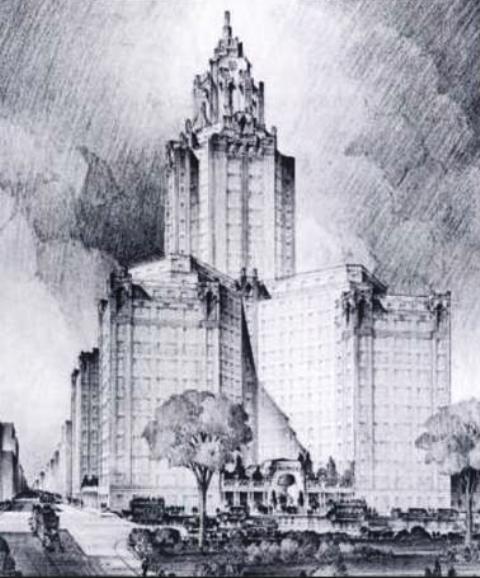
The plan was to construct a very modern apartment complex on the site, which would be designed by architect Emery Roth. Roth’s “winged fantasy apartment house” never took flight, thanks to zoning laws and the Great Depression.
In 1945, James Speyer sold the property for $2 million to Anthony Campagna, who planned on constructing apartments for 302 families on the site after the war ended.
The new apartments would feature garden courts and be called “House of Genuis” in honor of 61 Washington Square South, an old rooming house formerly owned by Madame Catherine R. Branchard, where many writers, poets, and other artists once lived (see photo above).
About 50 residents who lived in the buildings fought against the plan, but the developer secured evictions in January 1948 and reduced the entire block to rubble. In the end, however, the high-rise never rose. Campagna sold the property to New York University, which began constructing its $3.5 million Loeb Student Center in 1952.
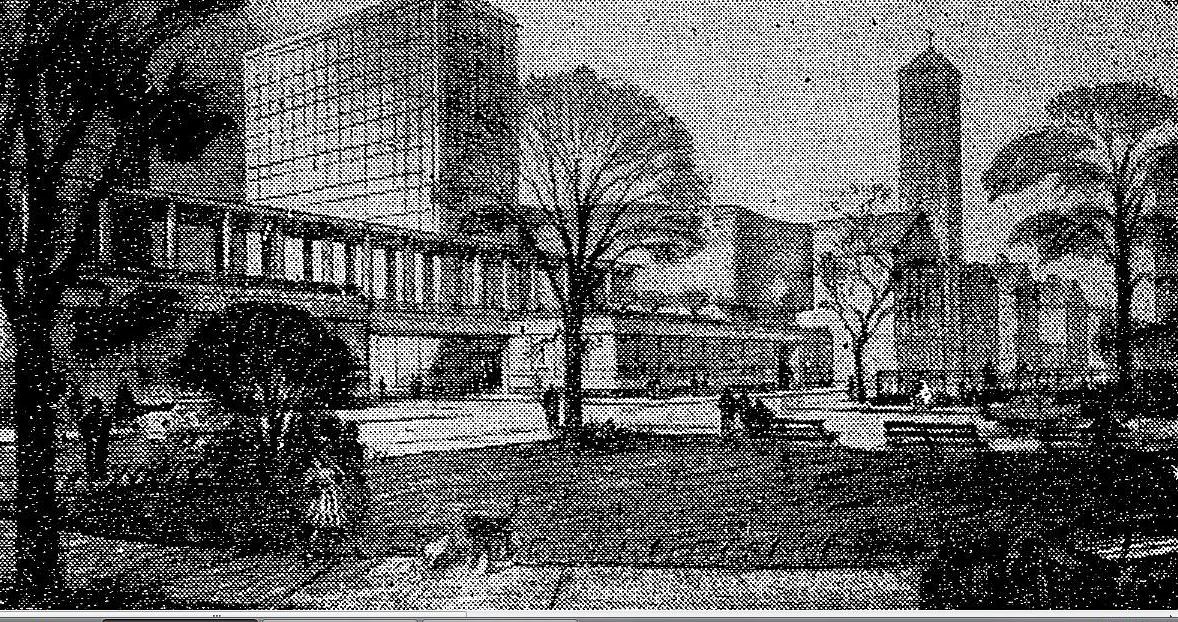
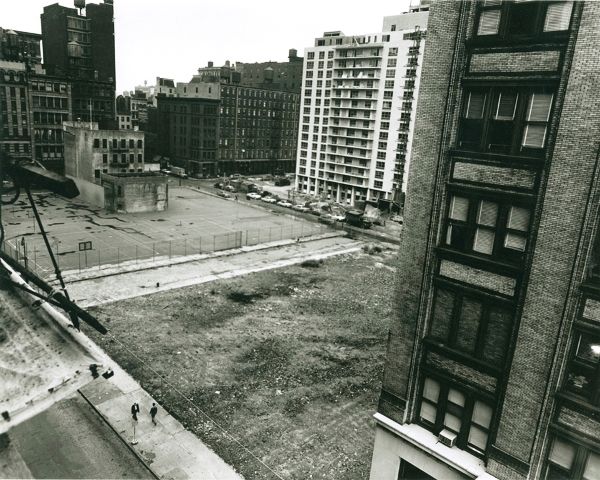

Part III: Jessie Tarbox Beals and the Bohemian Cats
In Part 3 of this Bohemian cat tale, we’ll explore more cat photos and take a tour of Jessie Tarbox Beals’ studio in Sheridan Square, where Crazy Cat made his home.
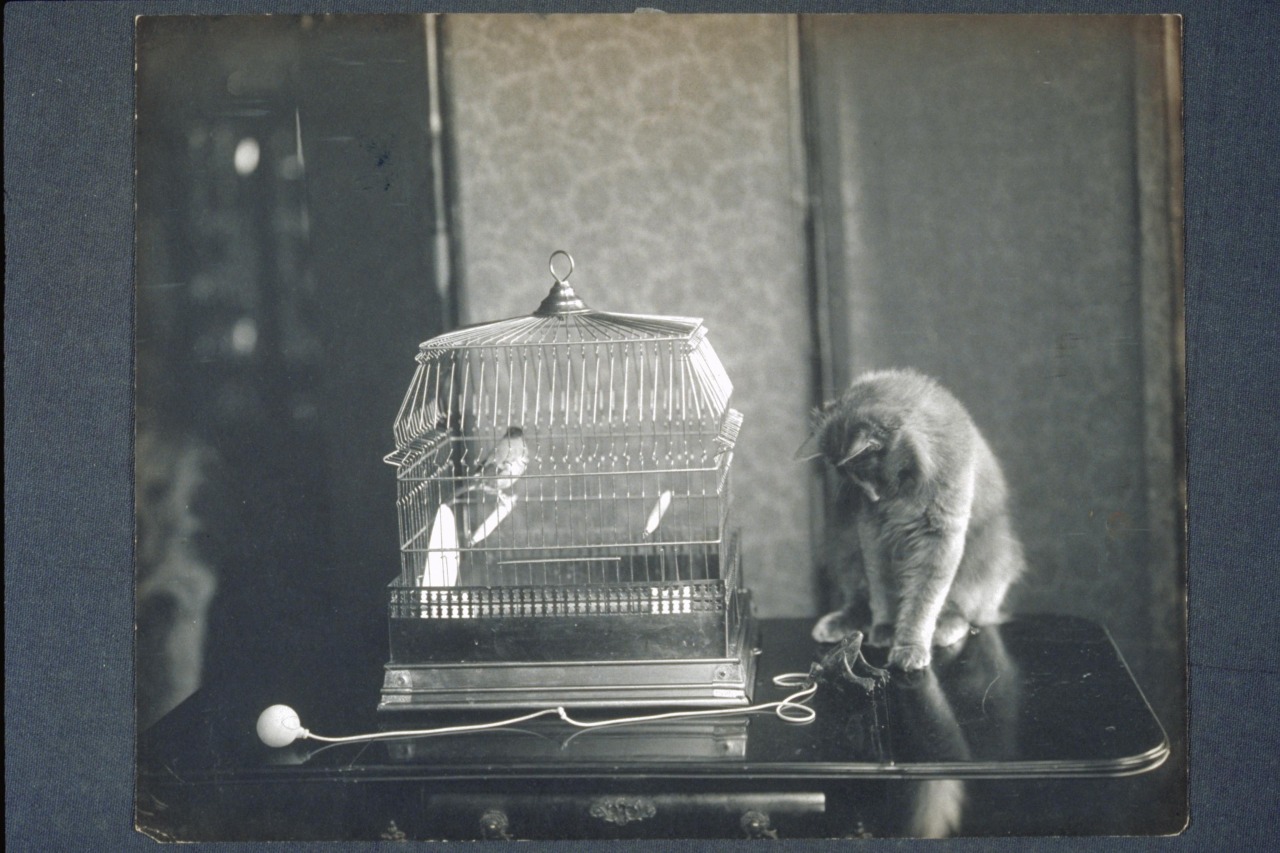




[…] 1916: Crazy Cat and the Bohemian Greenwich Village Felines of Sheridan Square, Part II […]